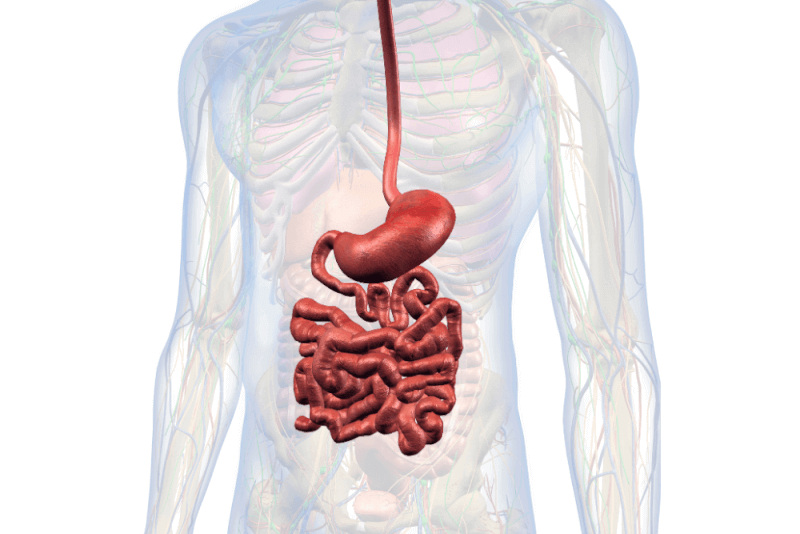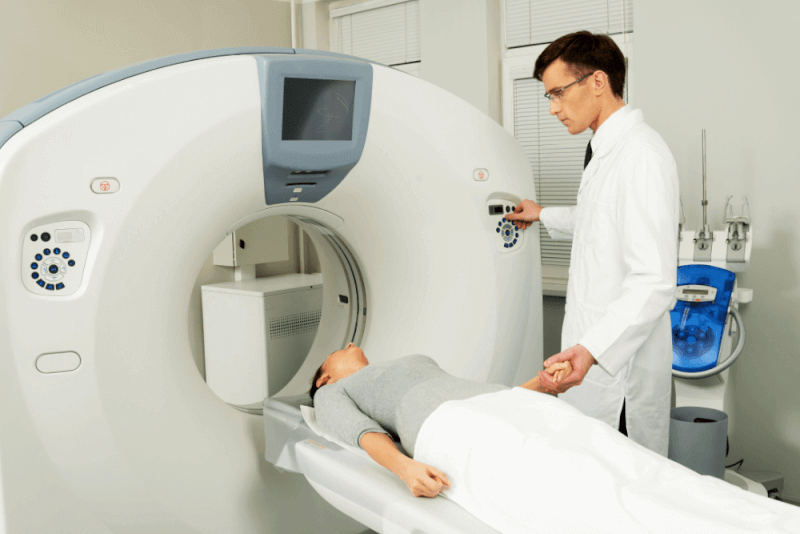What is Appendicitis?
The appendix, located in the lower right part of the abdomen, is one of the organs whose function remains a mystery. Situated at the junction where the small intestine ends and the large intestine begins, the appendix is also known as the cecum. Its length varies in each person but is approximately 10 cm long, and it is longer in children than in adults. While primarily thought to be part of the digestive system, it is also believed to be a part of the exocrine, endocrine, or lymphatic systems.
The appendix, whose function in the body is not fully understood, can be compared to the tonsils. Just as the mouth, which is the starting point of the digestive system, is rich in microbes, the large intestine is also rich in microbes. The appendix warns the body of the microbes present in the large intestine, similar to how the tonsils warn the body of microbes.
Inflammation in the appendix is called appendicitis. Severe pain is the most characteristic symptom of appendicitis, which must be treated without fail. If the abscess enters the bloodstream, it can pose a life-threatening risk. Appendicitis, usually caused by bacteria, needs to be removed before it bursts.
Symptoms of Appendicitis
Any blockage in the appendix causes bacteria to multiply rapidly, leading to infection. The swollen appendix puts pressure on blood vessels due to the blockage. The trapped blood vessels can lead to gangrene formation. This gangrene can cause the appendix to rupture, filling the abdominal area with feces. The infected appendix may also leak abscesses. The common symptoms of appendicitis are as follows:
- Knife-like pain when pressing on the lower right part of the abdomen,
- Increasing pain over time,
- Nausea,
- Vomiting,
- Dryness in the mouth and tongue,
- Loss of appetite,
- Dull pain around the navel,
- Digestive difficulties,
- Constipation,
- Diarrhea,
- High fever,
- Rapid heartbeat,
- Inability to pass gas,
- Difficulty and pain during bowel movements,
- In pregnant women, the pain is felt in the lower back.
Causes of Appendicitis Swelling, Pain, and Rupture
- Undigested food particles like lemon or pomegranate seeds entering the appendix while passing through the large intestine,
- Viruses, fungi, or bacteria damaging the appendix tissue and causing infection,
- Swelling of lymph nodes at the opening of the appendix due to digestive system inflammation,
- Intestinal infections,
- Blockage of the appendix due to abdominal trauma,
- Genetic predisposition,
- Crohn's disease,
- Parasites and worms in the intestines,
- Ulcerative colitis,
- Tumors,
What Happens if the Appendix Bursts?
If appendicitis is not treated, the inflammation causes the organ to rupture, known as an appendiceal burst. When the appendix bursts, the infection and bacteria inside it spread into the abdominal cavity.In case of an appendiceal burst, emergency medical intervention is required. Otherwise, the bacteria released from the burst appendix can cause peritonitis, a life-threatening inflammation of the abdominal lining.In addition, if the bacteria enter the bloodstream, it can cause sepsis, which is also life-threatening. If medical assistance is sought after an appendiceal rupture, an appendectomy is performed. This surgery involves removing the burst appendix and cleaning the abdominal cavity. The surgery can be done using either laparoscopic or open methods.
After surgery, intravenous antibiotic treatment continues to completely eliminate the infection. In some cases, antibiotic treatment continues even after discharge. The surgery to remove a ruptured appendix can have some complications, though they are rare, including:
- Infection
- Abscess
- Fistula
- Small bowel obstruction
- Abnormal bowel movements
- Adhesions in the stomach
Signs of Appendix Burst
An appendix burst is extremely painful and causes the infection to spread. Signs of an appendix burst appear 48 to 72 hours after the initial symptoms of appendicitis. The signs of an appendix burst include:
- Sudden relief of lower right abdominal pain, which then returns more severely,
- Pain spreading throughout the abdomen.
The reduction in pain due to decreased pressure from the rupture can be temporary. Therefore, it is crucial to see a doctor at the onset of appendicitis symptoms.
Treatment Methods for Appendicitis
Treatment for appendicitis varies among patients but generally involves surgery.
Antibiotic Treatment
If the infection in the appendix has not ruptured or burst, antibiotic treatment is typically used. Then, a tube is inserted through the skin to drain the abscess in the appendix. If this treatment is ineffective, surgery to remove the organ is performed.
Appendicitis Surgery
The most commonly preferred method for appendicitis surgery is laparoscopy, as the recovery period is shorter compared to open surgery. During the surgery, 3-4 small incisions are made, and special cameras and surgical tools are inserted into the abdominal cavity through these incisions. These tools include a camera, a tube to inflate the abdomen for better visibility, and small instruments for removing the appendix.
After the appendix is removed, absorbable stitches are used to close the incisions, allowing for faster recovery. If non-absorbable stitches are used, they are removed within 7-10 days.
In some patients, laparoscopic surgery cannot be performed. These patients may have a ruptured appendix or a mass known as an appendix lump in the abdomen. Open surgery is also performed if the patient has previously undergone open abdominal surgery.
In open surgery, a large incision is made in the lower right abdomen. The surgeon performs the operation through this incision. Open surgery can involve both absorbable and removable stitches. After the appendectomy, the removed appendix is sent to a pathology laboratory for examination. Full recovery after appendix removal takes a few weeks, but recovery from open surgery can take up to six weeks.
How Long Does Appendicitis Surgery Take?
It is difficult to determine the duration of appendicitis surgery. Factors such as the condition of the appendix and whether it has burst significantly affect the duration. However, surgeries performed using the laparoscopic method, where inflammation is normal and there are no complications, typically last about half an hour.
Life After Appendicitis Surgery
Patients need to rest to ensure a quick recovery after appendicitis surgery. Patients can usually get up within a day after laparoscopic surgery.
Showering should be avoided for two days after the surgery. It is important to follow the doctor's instructions for dressing changes and to keep the surgical area clean and dry.
Recovery takes up to 1.5 weeks if the surgery is performed laparoscopically. After full recovery, patients should avoid lifting heavy objects and engaging in strenuous physical activities for some time.
No dietary changes are needed after appendicitis surgery. However, if general anesthesia is used, liquid foods may be recommended initially due to throat irritation.
Patients should consult their doctors about when they can resume sexual activity. The surgical site should also be monitored closely for signs of infection.
Diet After Appendicitis Surgery
Certain foods can help reduce symptoms and speed up recovery after appendicitis surgery. The first of these foods is ginger tea, which helps reduce infection and prevent new infections.
Consuming pineapple after appendicitis surgery can speed up the healing of scars and provide energy, helping patients feel better.
Anesthesia from surgery can strain the liver. Consuming fresh seafood helps the liver recover more quickly. After surgery, it is common to experience constipation. Homemade yogurt and pickles can help stimulate bowel movements.
Surgery Summary
Duration of Surgery: 30 Minutes - 1 Hour
Type of Anesthesia: General
Hospital Stay: 2-3 Days
Return to Work: 2-4 Weeks
Appendicitis in Children and Babies
Appendicitis in children and babies is caused by the infection of the cecum after it becomes blocked for any reason. Diagnosis in children is usually made through a physical examination. However, to confirm the diagnosis, a white blood cell count and ultrasound imaging may be required.
Surgery is the only treatment option for appendicitis in children and babies. If surgery is performed within the first 24 hours after symptoms appear, recovery is quick, and they can be discharged within 24 hours. However, a delay in treatment extends the hospital stay.
Symptoms of Appendicitis in Children and Babies
It is not always possible to recognize appendicitis symptoms in children under two years old, as they can resemble symptoms of other health issues. Additionally, abdominal pain is common in children, making diagnosis difficult. Possible symptoms include:
- Abdominal pain starting around the navel and spreading to the lower right abdomen,
- Nausea and vomiting,
- Diarrhea,
- Loss of appetite,
- Irritability.
The pain children feel in the abdominal area tends to worsen when walking, running, jumping, or coughing.
















